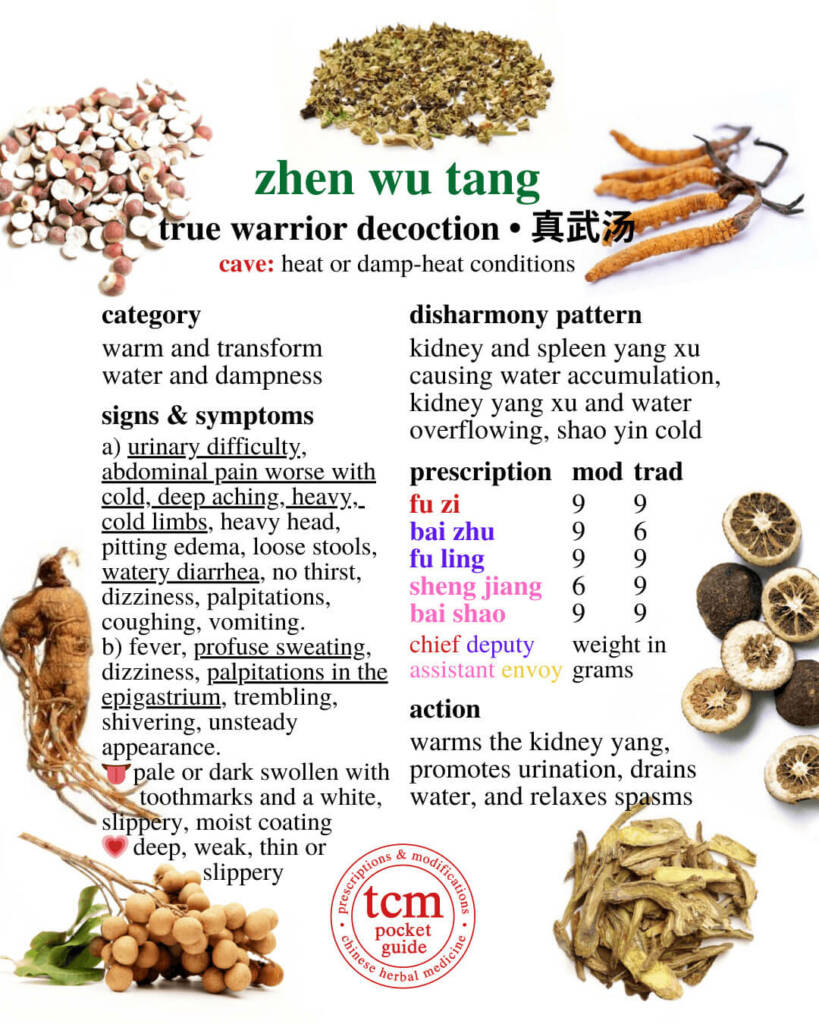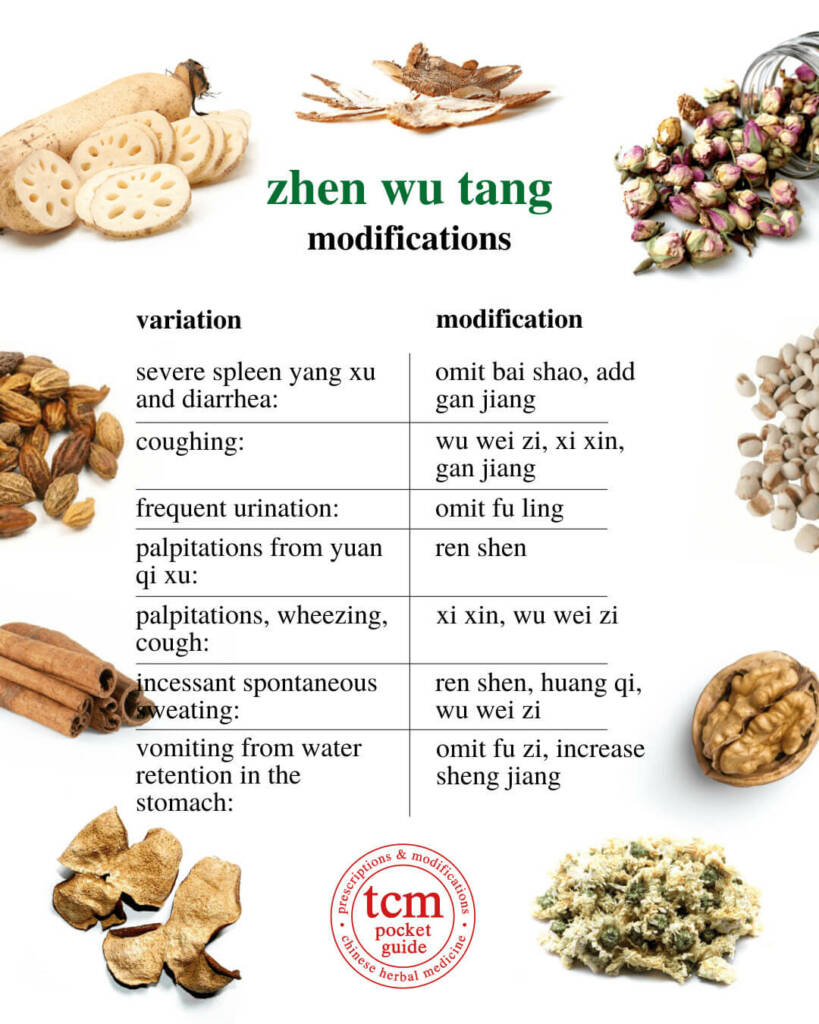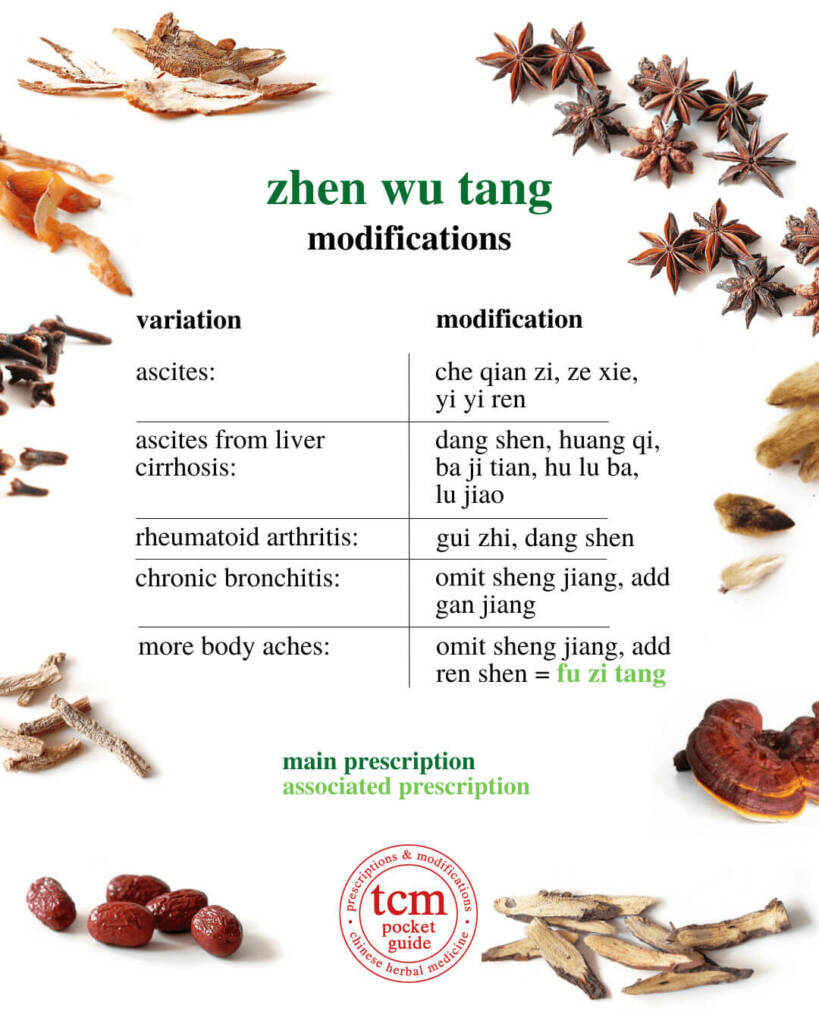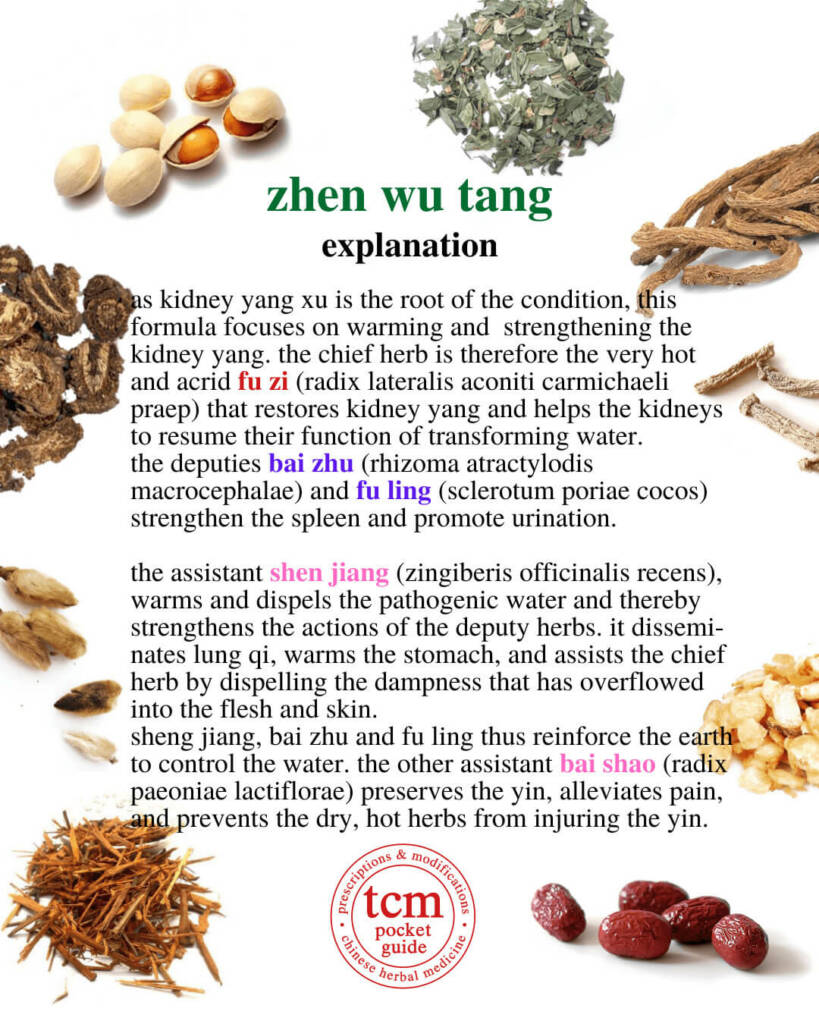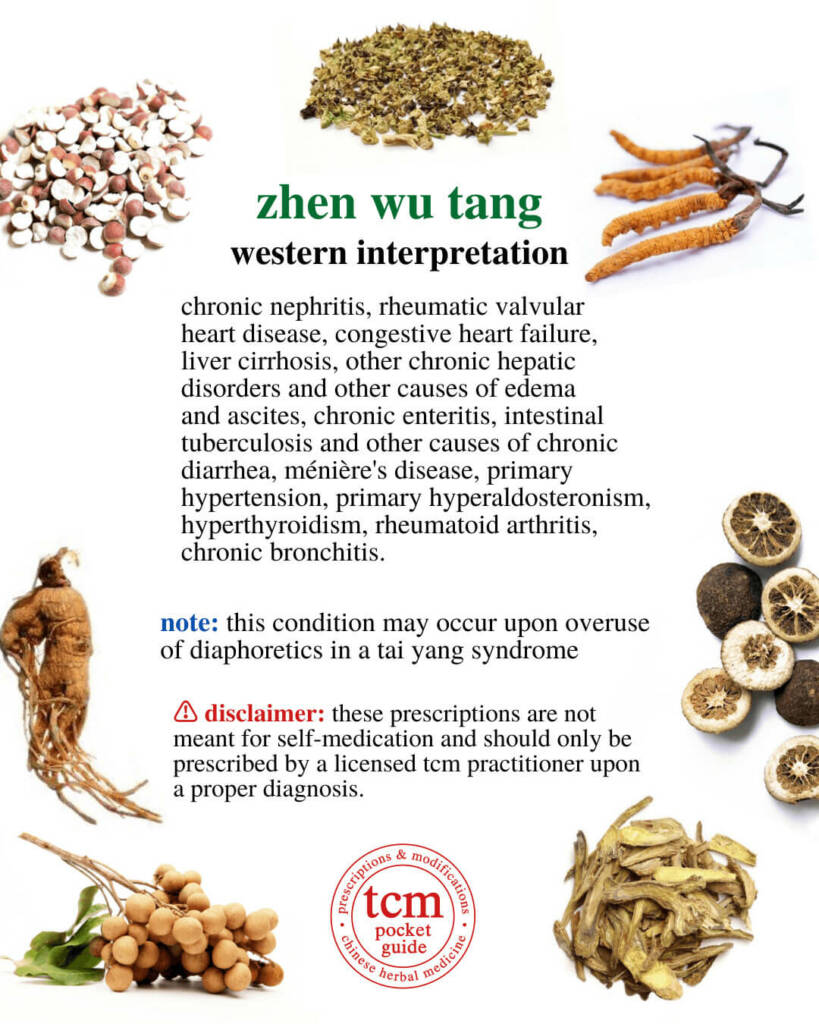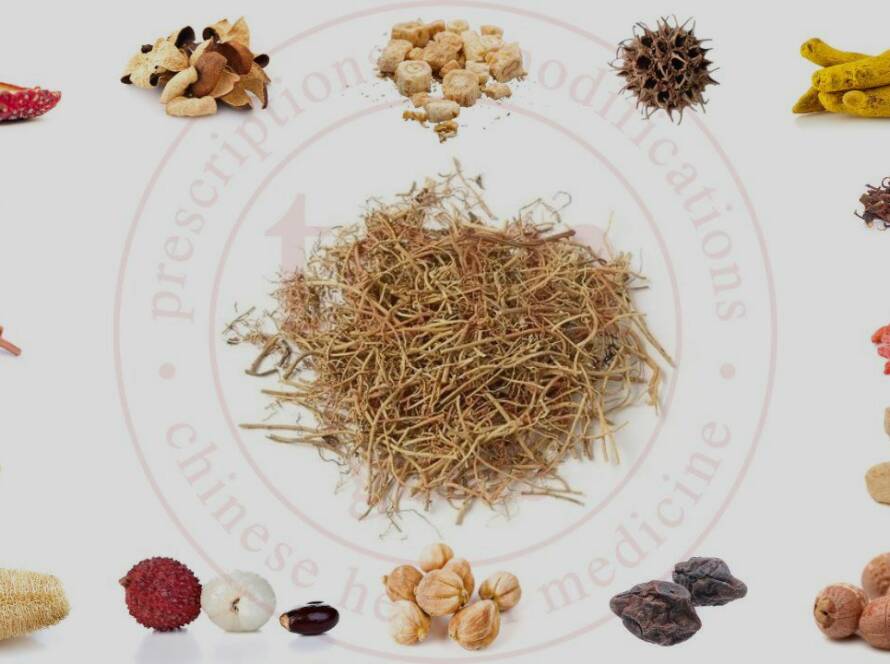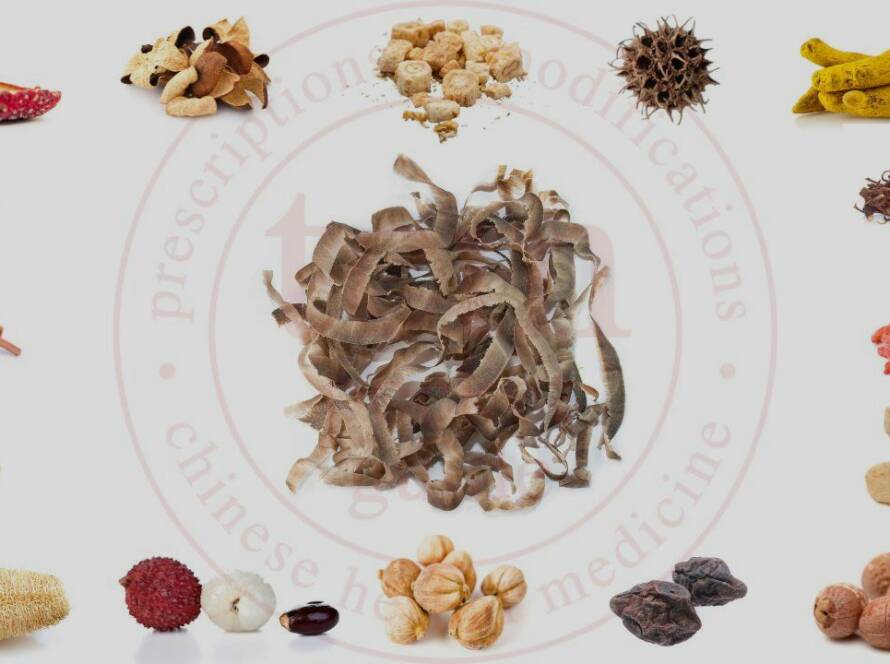zhēn wǔ tāng is used for patterns with
kidney and spleen yang deficiency causing water accumulation, kidney yang deficiency and water overflowing, shao yin cold.
symptoms indicating the use of zhēn wǔ tāng
a) urinary difficulty, abdominal pain worse with cold, deep aching, heavy, cold limbs, heavy head, pitting edema, loose stools, watery diarrhea, no thirst, dizziness, palpitations, coughing, vomiting.
b) fever, profuse sweating, dizziness, palpitations in the epigastrium, trembling, shivering, unsteady appearance.
western interpretation of zhēn wǔ tāng
chronic nephritis, rheumatic valvular heart disease, congestive heart failure, liver cirrhosis, other chronic hepatic disorders and other causes of edema and ascites, chronic enteritis, intestinal tuberculosis and other causes of chronic diarrhea, ménière’s disease, primary hypertension, primary hyperaldosteronism, hyperthyroidism, rheumatoid arthritis, chronic bronchitis.
explanation of the mechanism
a) the first presentation is kidney yang deficiency, or spleen and kidney yang deficiency, with retention of pathogenic water. the kidneys are the yin organ associated with water and fire. they control the process of water meetabolism and urination. when the true yang is deficient, the kidney qi loses its ability to transform water, which thereupon accumulates as pathogenic water in the lower jiao where it causes urinary difficulty a well as abdominal pain that is aggravated by cold.
the kidneys are the root of the body’s yang qi and support the generative and transformative processes in the other organs. for this rason, kindey yang deficiency is often accompanied by spleen yang deficiency.
the spleen governs the transformation and transportation of water and dampness. the inability of the spleen yang to transport water leads to various problems associated with the retention of pathogenic water and dampness. they may flood of spill over into the flesh and skin, producing generalized edema with deep aching and heaviness in the extremities. in the intestines this may cause loose stoools.
water and dampnesss prevent clear yang from ascending and the turbid yin from descending. this veils the sensory orifices and produces dizziness and a heavy sensation in the head. internal accumulation of damp-cold obstructs the flow of water and qi and causes abdominal pain.
when papthogenic water ascends and affects the heart, it causes epigastric palpitations; when it attacks the lungs, it disrupts the lung qi and produces coughing; and when it attacks the middle jiao it disturbs the spleen and stomach and causes vomiting and diarrhea.
the pale or dark swollen tongue with toothmarks, the white, slippery tongue coating, and the submerged, thin, and forceless pulse are signs of yang deficiency with internal retention of pathogenic water and dampness.
b) the second presentation is externally-contracted wind-cold at the greater/tai yang stage. when sweating does not alleviate the fever, the continuous loss of fluids causes the body to wither and severly depletes the yang qi. this deprives the sinews and flesh of nourishment, and the channels and extermities of warmth, which is manifested as shivering and trembling and an unsteady appearance.
(bensky & barolet)

created with love in switzerland 🇨🇭
feel free to share this content:


